 W
WThe Action off Măcin was a naval engagement between a torpedo boat of the Romanian Navy with a mixed Romanian-Russian crew and a monitor of the Ottoman Navy which took place during the 1877-1878 Russo-Turkish War. It was the first time in history that a torpedo craft sank its target without being sunk itself.
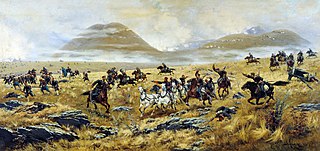 W
WThe Battle of Aladzha was a key battle of the Caucasian campaign of the Russo-Turkish War of 1877-78. Russian troops broke through the defenses of the Turkish troops on the Aladzhin heights, which allowed them to seize the initiative and begin the siege of Kars.
 W
WThe Battle of Bear Paw was the final engagement of the Nez Perce War of 1877. Following a 1,200-mile (1,900 km) running fight from western Idaho over the previous four months, the U.S. Army finally managed to corner most of the Nez Perce led by Chief Joseph in early October 1877 in northern Montana Territory, just 42 miles (68 km) south of the border with Canada, where the Nez Perce intended to seek refuge from persecution by the U.S. government.
 W
WThe Battle of the Big Hole was fought in Montana, August 9–10, 1877, between the U.S. Army and the Nez Perce tribe of Native Americans during the Nez Perce War. Both sides suffered heavy casualties. The Nez Perce withdrew in good order from the battlefield and continued their long fighting retreat that would result in their attempt to reach Canada and asylum.
 W
WThe Buffalo Hunters' War, or the Staked Plains War, occurred in 1877. Approximately 170 Comanche warriors and their families led by Quohadi chief Black Horse or Tu-ukumah left the Indian Territory in December, 1876, for the Llano Estacado of Texas. In February, 1877, they, and their Apache allies, began attacking buffalo hunters' camps in the Red River country of the Texas Panhandle, killing or wounding several. They also stole horses from the camp of Pat Garrett.
 W
WThe Buffalo Soldier tragedy of 1877, also known as the Staked Plains Horror, occurred when a combined force of Buffalo Soldier troops of the 10th Cavalry and local buffalo hunters wandered for five days in the near waterless Llano Estacado region of north-west Texas and eastern New Mexico during July of a drought year, where four soldiers and one buffalo hunter died.
 W
WIn an effort to reduce the fortress of Pleven quicker, Russian forces began targeting garrisons along the Ottoman supply and communications route. A significant garrison had been reduced at the Battle of Lovcha in September. General Joseph Vladimirovich Gourko was called up from the Shipka Pass area to deal with more of the garrisons protecting Pleven.
 W
WThe Great Sioux War of 1876, also known as the Black Hills War, was a series of battles and negotiations which occurred in 1876 and 1877 between the Lakota Sioux and the Northern Cheyenne vs. the United States. The cause of the war was the desire of the U.S. government to obtain ownership of the Black Hills. Gold had been discovered in the Black Hills, settlers began to encroach onto Native American lands, and the Sioux and Cheyenne refused to cede ownership to the U.S. Traditionally, the United States military and historians place the Lakota at the center of the story, especially given their numbers, but some Native Americans believe the Cheyenne were the primary target of the U.S. campaign.
 W
WThe Herzegovina uprising was an uprising led by Christian population, mostly Serbs, against the Ottoman Empire, firstly and predominantly in Herzegovina, from where it spread into Bosnia and Raška. It broke out in the summer of 1875, and lasted in some regions up to the beginning of 1878. It was followed by the Bulgarian Uprising of 1876, and coincided with Serbian-Turkish wars (1876–1878), all of those events being part of the Great Eastern Crisis (1875–1878).
 W
WThe Battle of Kars was a decisive Russian victory over the Ottoman Empire during the Russo-Turkish War (1877–1878).
 W
WThe Battle of Kizil-tepe was fought on August 25, 1877, between the Russian Empire and the Ottoman Empire. The Russian were attempting to besiege Kars. The Ottomans, vastly superior in numbers, successfully lifted the siege.
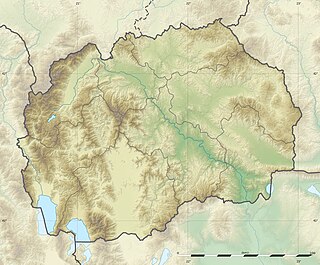 W
WThe Kumanovo uprising was an uprising organized by an assembly of chiefs of the districts of Kumanovo, Kriva Palanka, and Kratovo in the Vilayet of Kosovo in 1878. The movement sought to liberate the region from the hands of the Ottoman Empire and unify it with the Principality of Serbia, which was at war with the Ottomans at the time. Following the Serbian Army's liberation of Niš on 31 December 1877, the rebellion began on 20 January 1878 with guerrilla operations during the army's liberation of Vranje. The rebels received secret aid from the Serbian government. The uprising lasted four months until its suppression by the Ottomans on 20 May, during which the Ottomans retaliated with atrocities on the local population.
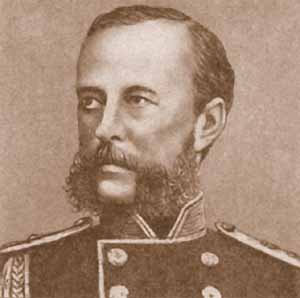 W
WThe Battle of Lovcha, or Loftcha, was a battle of the Russo-Turkish War (1877–1878) which occurred during the siege of Plevna. Russian forces successfully reduced the fortress at Lovcha, which had protected Plevna's communication and supply lines.
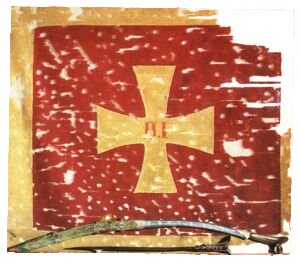 W
WThe Montenegrin–Ottoman War, also known in Montenegro as the Great War, was fought between the Principality of Montenegro and the Ottoman Empire between 1876 and 1878. The war ended with Montenegrin victory. Six major and 27 smaller battles were fought, among which was the crucial Battle of Vučji Do.
 W
WThe Nez Perce in Yellowstone Park was the flight of the Nez Perce Indians through Yellowstone National Park between August 20 and Sept 7, during the Nez Perce War in 1877. As the U.S. army pursued the Nez Perce through the park, a number of hostile and sometimes deadly encounters between park visitors and the Indians occurred. Eventually, the army's pursuit forced the Nez Perce off the Yellowstone plateau and into forces arrayed to capture or destroy them when they emerged from the mountains of Yellowstone onto the valley of Clark's Fork of the Yellowstone River.
 W
WThe Nez Perce War was an armed conflict that pitted several bands of the Nez Perce tribe of Native Americans and their allies, a small band of the Palouse tribe led by Red Echo (Hahtalekin) and Bald Head, against the United States Army. The conflict, fought between June and October 1877, stemmed from the refusal of several bands of the Nez Perce, dubbed "non-treaty Indians," to give up their ancestral lands in the Pacific Northwest and move to an Indian reservation in Idaho. This forced removal was in violation of the 1855 Treaty of Walla Walla, which granted the tribe 7.5 million acres in their ancestral lands and the right to hunt and fish in lands ceded to the government.
 W
WThe Battle of Nikopol, or Nicopolis, was one of the early battles of the Russo-Turkish War (1877–1878). As the Russian army crossed the Danube River, they approached the fortified city of Nikopol (Nicopolis). The Turkish high command sent Osman Pasha with the troops from Vidin to oppose the Russians' crossing of the Danube. Osman's intentions were to reinforce and defend Nikopol. However, the Russian IX Corps under General Nikolai Kridener reached the city and bombarded the garrison into submission before Osman could arrive. He instead fell back to Plevna. With the Nikopol garrison eliminated, the Russians were free to march on to Plevna.
 W
WThe Battle of Pacocha was a naval battle that took place on 29 May 1877 between the rebel-held Peruvian monitor Huáscar and the British ships HMS Shah and HMS Amethyst. The vessels did not inflict significant damage on each other, however the battle is notable for seeing the first combat use of the torpedo.
 W
WThe Reading Railroad Massacre occurred on July 23, 1877, when strikes in Reading, Pennsylvania, led to an outbreak of violence, during which 10 to 16 people were killed and between 20 and 203 were injured. It was the climax of local events during the Great Railroad Strike of 1877 towards the end of the Long Depression of 1873–1879, following arson and riots against local facilities of the Philadelphia and Reading Railroad.
 W
WThe Romanian War of Independence is the name used in Romanian historiography to refer to the Russo-Turkish War (1877–78), following which Romania, fighting on the Russian side, gained independence from the Ottoman Empire. On April 16 [O.S. April 4] 1877, Romania and the Russian Empire signed a treaty at Bucharest under which Russian troops were allowed to pass through Romanian territory, with the condition that Russia respected the integrity of Romania. Consequently, the mobilization of the Romanian troops also began, and about 120,000 soldiers were massed in the south of the country to defend against an eventual attack of the Ottoman forces from south of the Danube. On April 24 [O.S. April 12] 1877, Russia declared war on the Ottoman Empire and its troops entered Romania through the newly built Eiffel Bridge, on their way to the Ottoman Empire. Due to great losses, the Russian Empire asked Romania to intervene. On July 24 [O.S. July 12] 1877, the first Romanian Army units crossed the Danube and joined forces with the Russian Army.
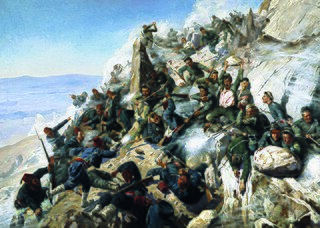 W
WThe Russo-Turkish War of 1877–1878 was a conflict between the Ottoman Empire and the Eastern Orthodox coalition led by the Russian Empire and composed of Bulgaria, Romania, Serbia, and Montenegro. Fought in the Balkans and in the Caucasus, it originated in emerging 19th-century Balkan nationalism. Additional factors included Russian goals of recovering territorial losses endured during the Crimean War of 1853–56, re-establishing itself in the Black Sea and supporting the political movement attempting to free Balkan nations from the Ottoman Empire.
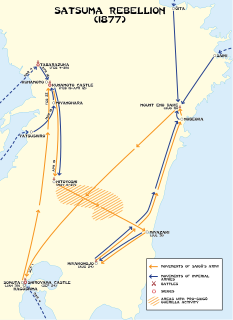 W
WThe Satsuma Rebellion, also known as the Seinan War was a revolt of disaffected samurai against the new imperial government, nine years into the Meiji Era. Its name comes from the Satsuma Domain, which had been influential in the Restoration and became home to unemployed samurai after military reforms rendered their status obsolete. The rebellion lasted from January 29, 1877, until September of that year, when it was decisively crushed and its leader, Saigō Takamori, committed seppuku after being mortally wounded.
 W
WThe Serbian–Turkish Wars, also known as the Serbian–Ottoman Wars or Serbian Wars for Independence, were two consequent wars, fought between the Principality of Serbia and the Ottoman Empire. In conjunction with the Principality of Montenegro, Serbia declared war on the Ottoman Empire on 30 June 1876. By the intervention of major European powers, ceasefire was concluded in autumn, and the Constantinople Conference was organized. Peace was signed on 28 February 1877 on the basis of status quo ante bellum. After a brief period of formal peace, Serbia declared war on the Ottoman Empire on 11 December 1877. Renewed hostilities lasted until February 1878. Final outcome of wars was decided by the Congress of Berlin (1878). Serbia gained international recognition as an independent state, and its territory was expanded.
 W
WThe Battle of Shipka Pass consisted of four battles that were fought between the Russian Empire, aided by Bulgarian volunteers known as opalchentsi, and the Ottoman Empire for control over the vital Shipka Pass during the Russo-Turkish War (1877–1878). The crucial moment came in August 1877, when a group of 5,000 Bulgarian volunteers and 2,500 Russian troops repulsed an attack against the peak by a nearly 40,000 strong Ottoman army.
 W
WThe Battle of Shiroyama took place on 24 September 1877, in Kagoshima, Japan. It was the final battle of the Satsuma Rebellion, where the heavily outnumbered samurai under Saigō Takamori made their last stand against Imperial Japanese Army troops under the command of Generals Yamagata Aritomo and Kawamura Sumiyoshi. The battle culminated in the annihilation of Saigō's army as well as his death, marking the end of the Satsuma Rebellion. The Imperial Army's victory consolidated their power, and they would not see another instance of internal mutiny.
 W
WThe Battle of Svistov was a battle of the Russo-Turkish War of 1877–1878. It was fought between the Ottoman Empire and Imperial Russia on 26 June 1877. It occurred when Russian general Mikhail Ivanovich Dragomirov crossed the Danube River in a fleet of small boats and attacked the Turkish fortress. The next day, Mikhail Skobelev attacked, forcing the Turkish garrison to surrender. In result, the Russian military became ready to attack Nikopol.
 W
WThe Battle of the Viaduct was an event that took place on July 25, 1877, in Chicago due to a much larger event, the Great Railroad Strike of 1877. The strike began on July 14, 1877 in Virginia.
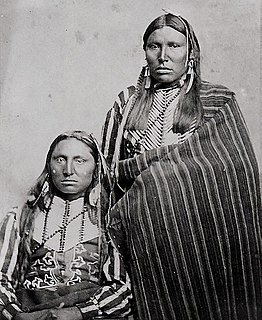 W
WThe Battle of Yellow House Canyon was a battle between a force of Comanches and Apaches against a group of American bison hunters that occurred on March 18, 1877, near the site of the present-day city of Lubbock, Texas. It was the final battle of the Buffalo Hunters' War, and was the last major fight involving the United States and Native Americans on the High Plains of Texas.